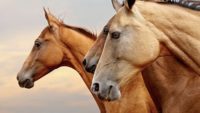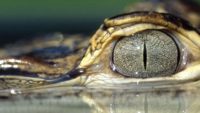The hunter so well designed it perfectly fits into a specific habitat. …read more Read more here: creation.com
Pseudogenes were once thought to be genomic fossils—the broken remnants of genes that mutated long ago. However, research is progressively showing that many pseudogenes are highly functional and critical to life. Now, a newly characterized pseudogene has been shown to produce a functional protein, but only in cells where it is required—leading researchers to coin a new term pseudo-pseudogene. More… …read more Read more here: icr.org
By Jeffrey P. Tomkins The current chimpanzee genome assembly has problems that reduce its veracity as an authentic representation. …read more Read more here: AIG Daily
Is a mutation that seemingly reduces risk of cardiovascular disease an example of evolution in action? …read more Read more here: creation.com
By Dr. David Menton Dogs are always sniffing around, but it’s not because they’re always hungry. Unlike us, they interpret the world primarily through smell. …read more Read more here: AIG Daily
Buried bones, ancient carvings, and cave paintings reveal early European cow-types. Some had the large shoulder humps of bison, some showed the big horns of the extinct aurochs—extinct ancestors of modern cattle—and others seemed like hybrids between these forms. Classic Darwinian evolution asserts one ancestor for various descendants. These supposedly separate into isolated species which can’t breed, like tree branches extending far from their trunk. A recent study exposed how this concept clashes with the actual trends in cow-kind variation. More… …read more Read more here: icr.org
Man looked to the birds, and conquered the skies. Now researchers are looking to imitate a much tinier winged creature … …read more Read more here: creation.com
A theory divided against itself: a ‘primitive’ creature is ‘superior’! …read more Read more here: creation.com
By Jean O’Micks Until now there have been two basic theories on the evolution of cellular complexity. …read more Read more here: AIG Daily
Medical students learn classic pathology cases to help them identify diseases. One such case involved human cannibals who ended up with tremors, seizures, balance disorders, and hallucinations after eating nervous tissue. The fatal diseases, Kuru disease and Creutzfeld-Jakob disease (CJD), which are akin to mad cow disease, are caused by mysterious transmissible proteins known as prions. These proteins can be found in neurons. When a prion becomes pathologically misshapen, an infectious change reaction occurs where prions in the host become shaped the same way as the infecting prion. Could prions play a role in evolution? More… …read more Read more [More]
When researchers assume fossils with DNA are a certain age, they are faced with the glaring contradiction that basic chemistry means DNA should not be present. …read more Read more here: creation.com
By Dr. Kevin Anderson The recent report of a 1.5-billion-year-old fossil1 has brought attention once again to the alleged evolution of multicellular systems. …read more Read more here: AIG Daily
An extraordinary bird that feigns injury to distract predators so its young can escape, is an example of incredible design and not random chance. …read more Read more here: creation.com
By Ken Ham For the evolutionary story to be possible, there must be some evidence of creatures undergoing intermediate stages of evolution. So do a dwarf gecko’s hairy toes show signs of stepwise evolution in progress? A recent news story caught my eye when I read the following quotes: But new analysis suggests one Gonatodes species is on its way to developing adhesion. Researchers at the University of California, Riverside say Gonatodes humeralis offers a “snapshot” of evolution. “Until now, we had not seen a gecko showing the beginnings of the adhesive system,” [Timothy Higham, a gecko expert and associate [More]
By Dr. Kevin Anderson Despite a large body of evidence for the authenticity of the dinosaur tissue, there remains a pattern of denial within the evolutionist community. …read more Read more here: AIG Daily
By Dr. Elizabeth Mitchell Discovery of sophisticated eyes in a fossilized hagfish has dethroned the modern blind hagfish as the only observable intermediate form in eye evolution. …read more Read more here: AIG Daily
A recent paper shows that the skill of some songbirds to extemporaneously innovate musical repertoire equals that of human musicians. Since none of the apes have this complex human-like capability, the discovery poses a big problem for the evolutionary model of human origins. More… …read more Read more here: icr.org
By Ken Ham For scientists who believe life evolved from chemicals, there’s a huge push to recreate how that might have happened by attempting to make life in a lab. But no matter how many times they’ve tried, scientists have not been able to make life from nonliving chemicals. As the law of biogenesis states, life always comes from other life. Even if they make life in a lab, scientists would be showing that it took intelligence, not natural processes, to do it! Dr. Andrew Fabich, a microbiologist and associate professor of biology at Truett McConnell University, recently wrote a [More]
By Dr. Kevin Anderson For more than a century Christians have looked for the scientific silver bullet that would destroy Darwinian evolution and prove biblical creation to be true. …read more Read more here: AIG Daily
By Ken Ham How did the rattlesnake get its rattle? A recent article about new research on the rattlesnake’s formidable rattle states, “The evolution of the rattle has baffled scientists because, unlike other complex physical traits like eyes or feathers, it has no obvious precursor or intermediate stage.” According to David Pfennig at the University of North Carolina at Chapel Hill, “There is no half-rattle.” Well, to those who start with the Bible, it’s no surprise that no such thing as a “half-rattle” exists. But for an evolutionist this is a major puzzle. Now evolutionists have suggested perhaps snakes started [More]
One of the main themes of evolution is the belief that certain types of DNA sequences freely mutate and develop new functions that evolve creatures. This mostly mythical concept was applied to the protein-coding regions of genes, but in recent years this idea was discredited by the discovery of multiple codes imbedded in the same sequence—because the disruption of these codes is typically harmful, mutations are not tolerated. And now another critical imbedded code was discovered, further discrediting the idea of pervasive mutable DNA in genes. More… …read more Read more here: icr.org
An astonishingly complex plant helps provide a technical breakthrough and a smooth solution. …read more Read more here: creation.com
By Dr. David Menton The Creator gave a few select animals—such as horses and camels—unique abilities to serve alongside people in harsh environments. …read more Read more here: AIG Daily
Scientists mapped the color shading of a particularly well-preserved Chinese fossil—a Psittacosaurus [sit uh kuh SAWR us]—onto several three-dimensional, lifelike models of the dinosaur. They discovered that the extent of lighter areas on its belly matched that of today’s animals that live in shaded areas, like beneath trees, as opposed to open plains. In the process, the researchers confirmed pigment and protein remnants in the fossil skin that should have decayed long ago if they were really millions of years old. More… …read more Read more here: icr.org
By Ken Ham A news item on a new research study revealed something very startling—alligators are, well, still alligators! Well, maybe this is only startling if you’re an evolutionist! Apparently they’ve “remained virtually untouched by major evolutionary change for at least 8 million years” despite the sea level fluctuations and major climatological changes evolutionists assume happened in the Florida peninsula during that time. The lead author of the research paper says, If we could step back in time 8 million years, you’d basically see the same animal crawling around then as you would see today in the Southeast. Even 30 [More]
The human genome is the most complex computer operating system in the known universe and defies naturalistic explanations. …read more Read more here: creation.com
By Dr. Elizabeth Mitchell Discovery of placodes on reptile embryos is being seen as proof of the evolutionary connection between reptilian scales, bird feathers, and mammalian hair. …read more Read more here: AIG Daily













































